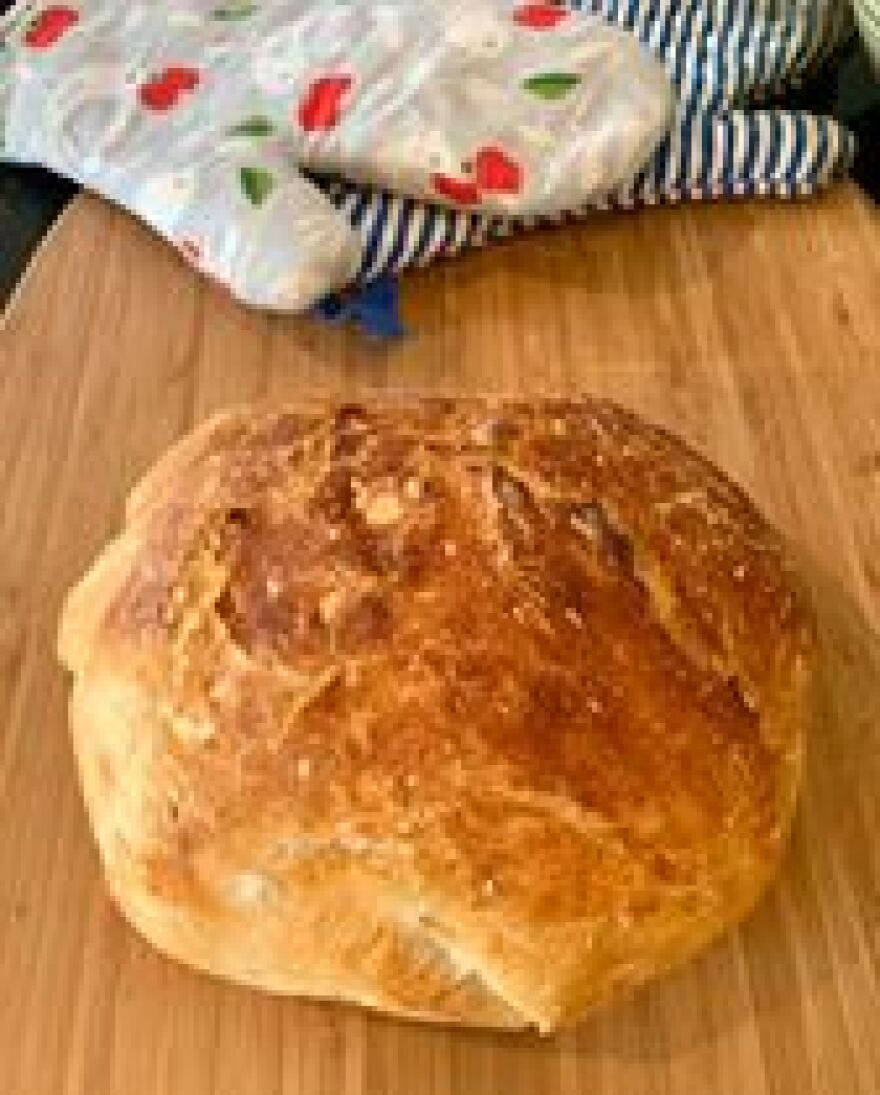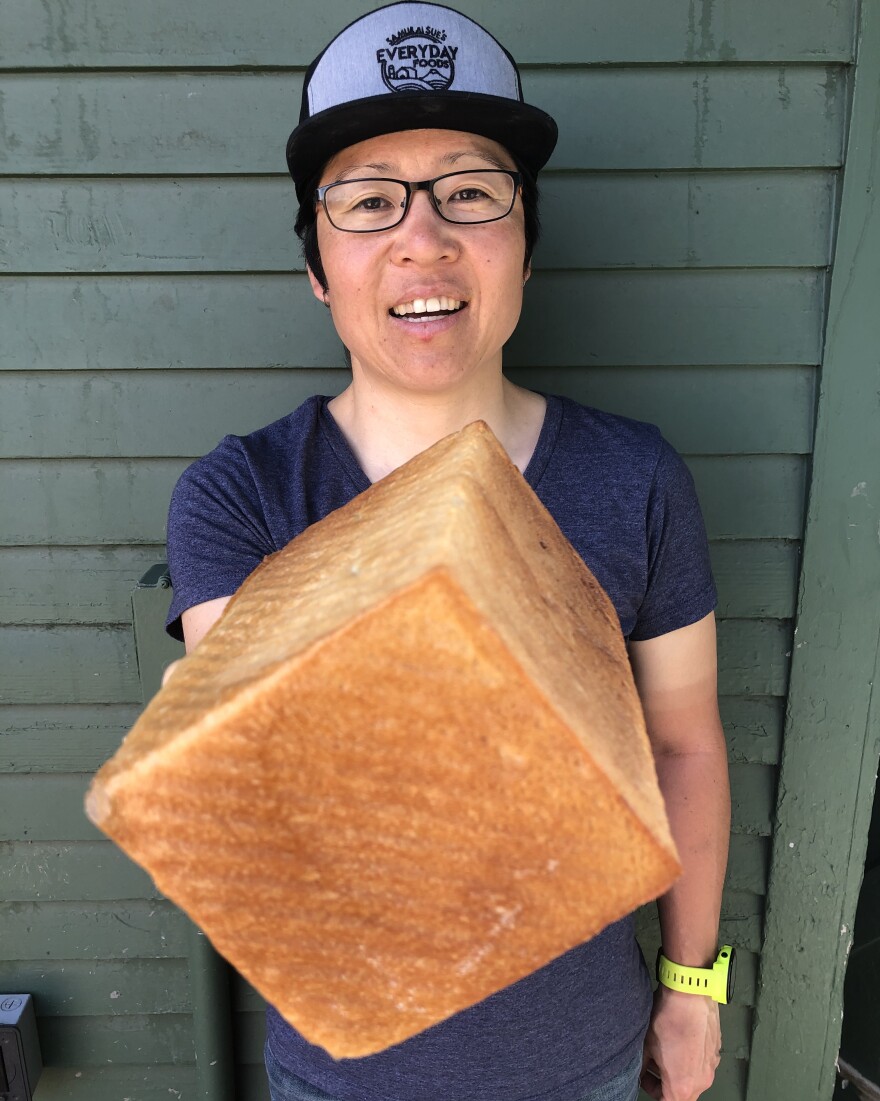During the rising of the COVID-19 Pandemic, many rediscovered their inner knead. The making of bread provided comfort and a sense of security, evident by the disappearance of flour and yeast from the grocery store shelves. Social media then showcased the photos of the risen results.
Before the virus takeover, diners pushed aside the bread that came to the table. Dislike for bread became a popular reaction. Some were gluten intolerant, and for those with the autoimmune disorder, Celiac disease, avoiding bread was important for their health while others, saw the baked gluten goods as unhealthy for their diet. Gluten and carbohydrates became bad words.
Asano Otsu, owner and founder of Samurai Sue’s Everyday Foods in Red Lodge, launched her business two years ago at the height of the gluten free movement. From a kitchen behind Moon Lake Market, under the watch of the Beartooth Mountains, she makes grain bowls and sandwiches. For her sandwiches, she wanted to bake her own breads so she embarked on baking up sourdough breads.

Otsu combined sourdough starters she had in her collection. Over the years she had received mixtures of flour, water and leavening that had fermented over time from friends. She created a concoction that now is the rising and flavoring agent for her country loaf, ciabatta rolls, baguettes, and her latest bread, Shokupan.
Otsu shared of the sourdough starter, “The sourdough culture breaks down some of the gluten for you, before you eat it.” Then of her breads, she adds four different flours making it a multigrain bread and not just white.
With knowledge gained from online sites such as King Arthur Flour and The Perfect Loaf, a blog started by Maurizio, a software engineer-turned-baker, Otsu began a period of experimentation.
“Trial by fire,” Otsu admitted to learning her craft. She said of failures, “Think of what went wrong and try getting back to trying it again, and do it differently to make it work the next time. I really think experience is gained by doing and making mistakes is invaluable.”
Another key to success for Otsu was weighing out her ingredients rather than measuring with a cup. By quantifying with a scale, the amounts are more exact, producing more consistent breads.
Over the years, Otsu has adapted to her work environment, adjusting to the nuances of her kitchen. Without equipment such as a proofer, she has learned where to put her starter for activation, and breads for rising, when the weather changes and alters the ambient environment.

As a wilderness enthusiast in mountaineering and climbing joined with her experiences as an instructor for Outward Bound, an outdoor learning and leadership program for youths and adults, she gained the skills of adaptability and attention. Making sourdough bread requires care. With a starter, a living culture, nourishment and comfort are required for ultimate production of carbon dioxide and acid necessary for bread to rise.
Otsu grew up in Kyoto to discover the United States in her adolescence. Through a one-year exchange program with friends of the family in Colorado, she said, “I don’t think I wanted to go back home.” But it was the memories of home and of her childhood that inspired her to bake her Shokupan bread. With a name that translates with “shoku” as eat and “pan” as bread, Otsu decided to bake this versatile milk, butter and egg bread reminiscent of her Japanese upbringing. The bread that requires three days to make, is baked in a Pullman pan, a loaf pan with a lid. The loaf of bread bakes up in a perfect rectangular box shape with straight edges.
Otsu’s background continues with her grain bowls with the idea of grab and go: Yakitori and Yakitofu made with five-spice marinade. The protein is served on a kale-quinoa salad with pickled beets, baby lima beans and roasted pumpkin seeds. Sandwiches include ham with pepper jelly while turkey is accompanied with a soy cabbage slaw.
Otsu combines a world of flavors sharing of the food she serves, “When I first started, my motto was, new authentic American.” She continued, “Even here in Montana, away from the coastal lines and all these foodie cultures, folks like food that taste good. They don’t really care if the turkey sandwich does not have mustard and mayo.”
Samurai Sue’s Everyday Foods breads can be purchased through Moon Lake Market on the main drag in Red Lodge or through the Yellowstone Valley Food Hub online with Thursday orders finalized by Tuesday night.
For Otsu, she saw the silver lining in the COVID-19 Pandemic as a time when people returned to eating and enjoying bread.
The stay-at-home edict also gave many the chance to explore their inner bread baker. Consumers emptied store shelves of flour and yeast. The result of crusty artisan rounds and puffy loaves graced postings on Facebook and Instagram. I wanted to talk to some of those who approached bread making for the first time. Ken Siebert and I reviewed the responses I received when I solicited for photos and stories from those in Billings who baked bread for the first time.

We both immediately picked Ann Jackson Eaton’s focaccia decorated with sliced onions, cherry tomatoes, chives and celery leaves depicting a flower garden. Eaton said she was always hesitant about working with yeast but decided to take up the challenge during her home isolation.
Sarah James tackled pretzel buns stuffed with chorizo and mozzarella. She credited her in laws for inspiring her to make the buns, because as Butte natives, they made pasties. James wanted to make something stuffed and pretzel buns. After investigating online, she came across the pretzel buns with chorizo and mozzarella. Her recipe required the making of the dough, the preparation of a filling, stuffing the buns and boiling the buns before baking them.
The most popular bread recipe on the Internet was for No Knead Bread. After Jon Pierce’s son made him aware of the recipe, he proceeded to make the bread that eliminated the requirement to work the dough. Flour, salt, yeast and water mixed together sit overnight to be mixed together to be placed in a heated Dutch oven, first baked with the lid on and then crisped with the lid removed. Though Pierce’s wife is trying to dissuade him from making more bread, he has baked up more than half a dozen loaves.
Bread is the bread of life and during this COVID-19 Pandemic it’s making and eating have risen back onto our dining tables.



